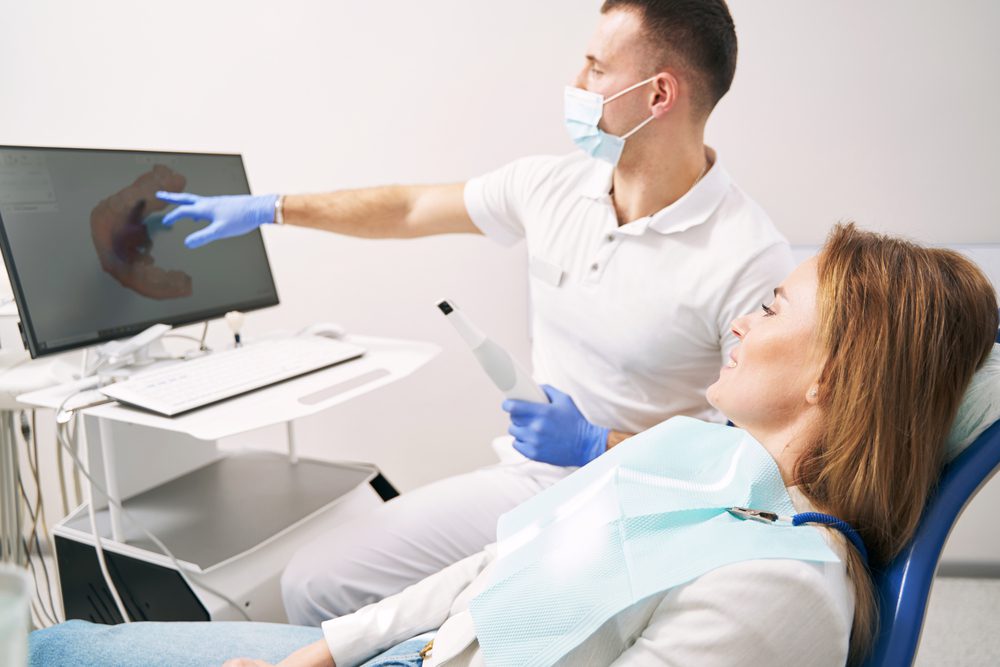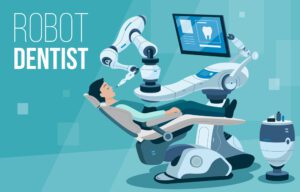Posted on April 4, 2023

When was the last time you went to the dentist? Did you notice anything different about your experience? With advancements in technology, the field of dentistry has made significant strides in recent years.
Going to the dentist can be a nerve-wracking experience for many people, but new innovations are making it faster, easier, and less painful. Dentistry has come a long way from the old-fashioned techniques that involved drills, needles, and pain.
With new approaches like digital imaging, laser dentistry, and nanotechnology, dentists are able to provide better and more comfortable care for their patients. If you’re curious about the latest advancements in dentistry, read on to learn more about the new innovations that are shaping the field.
Artificial Intelligence (AI) has made its way into the field of dentistry and is revolutionizing the way dental care is being delivered. AI-powered tools and applications are helping dentists to identify potential dental issues early on and provide more personalized treatment plans.
AI technology can also help dentists to improve their diagnostic accuracy and reduce the risk of human error. AI-powered robots are being developed to assist dentists during surgical procedures, increasing efficiency and improving patient outcomes.
Overall, the use of AI in dentistry is set to transform the way dental care is delivered, making it more accurate, efficient, and personalized.
The Intraoral Scanner is revolutionizing dentistry with its ability to capture accurate 3D models of the mouth’s interior in real time. This innovative tool allows for precise diagnoses and treatment plans, while also improving the patient experience with painless and fast procedures. It’s no wonder why the Intraoral Scanner is becoming an essential tool in modern dentistry.
CRISPR (Clustered Regularly Interspaced Short Palindromic Repeats) is a revolutionary tool that has recently been introduced in dentistry, primarily for treating genetic dental disorders. It is a precise gene editing technique that allows dentists to modify the human genome to eliminate, repair or introduce specific traits in the genetic material.
CRISPR has the potential to revolutionize the field of dentistry by offering a permanent solution to a range of dental disorders such as enamel hypoplasia, dentinogenesis imperfect, and amelogenesis imperfecta. With the use of CRISPR, we may see a drastic change in the way dental treatments are done in the near future.
3D printing is revolutionizing the dental industry, allowing for greater precision and speed in creating dentures. With this technology, dentists can take digital scans of patients’ mouths and use specialized software to design dentures that fit perfectly.
The 3D printer then creates the dentures from resin or other materials, cutting down production time and costs. This also allows for easier customization and adjustments to ensure optimal comfort and functionality. As the technology continues to improve, we can expect even more innovations in dentistry through 3D printing.
 One of the latest innovations in dentistry is the use of robotic surgery in dental procedures. This technology allows for greater precision and accuracy in complex dental surgeries such as gum tissue removal, and tooth extractions.
One of the latest innovations in dentistry is the use of robotic surgery in dental procedures. This technology allows for greater precision and accuracy in complex dental surgeries such as gum tissue removal, and tooth extractions.
Robotic surgery also minimizes the risk of human error and reduces recovery time for patients. While not yet widely available, the use of robotics in dentistry shows promising potential in improving the overall patient experience and outcomes.
Regenerative dentistry is a cutting-edge field that utilizes biologically active molecules and biomaterials to stimulate the body’s natural healing process and regenerate damaged or lost tissues in the oral cavity.
This approach has many advantages over traditional restorative procedures, such as stronger and more natural-looking teeth with reduced decay and sensitivity. With the potential to revolutionize the treatment of common dental issues like gum disease and tooth loss, regenerative dentistry is an exciting area of research and development for dental professionals and patients alike.
With the rise of technology, it’s no surprise that even toothbrushes are getting smarter. Smart toothbrushes are equipped with sensors, timers, and apps that can track your brushing habits and offer personalized tips for better oral hygiene.
Some can even connect to your smartphone via Bluetooth and provide real-time feedback on your brushing technique. These innovations not only make brushing more interactive and enjoyable but also help prevent dental problems in the long run.
With the introduction of the smart toothbrush, dentistry is entering a new age that prioritizes preventative care and personalized solutions.
Augmented Reality (AR) is a technology that blends the physical and digital worlds by overlaying computer-generated content onto our view of reality.
In the field of dentistry, AR has been used in various ways to enhance the patient experience and make dental procedures more efficient.
For example, AR can be used to simulate different treatment options and show patients what their teeth would look like after each option.
It can also be used to guide dentists during procedures by projecting a magnified image of the tooth onto a screen for precise operations. With the help of AR, dentistry is becoming more innovative and efficient, ultimately leading to better patient outcomes.
Dentistry has always been associated with pain and discomfort, but with the latest technological advancements, this perception is changing. Virtual Reality (VR) is one such innovation that is taking the dental world by storm.
By creating a lifelike simulation of dental procedures, VR allows patients to experience dental treatment in a whole new way. From distraction techniques to pain management, VR technology is helping dentists to provide their patients with a more relaxed and comfortable dental experience.
With the increasing popularity of VR in dentistry, it is clear that technology is reshaping the way we perceive dental care.
Teledentistry is an innovative approach to dental care that allows patients to receive consultations, recommendations, and problem-solving from a dental professional remotely, via technology.
With teledentistry, patients can receive expert advice on dental problems, schedule appointments, and get prescriptions without having to visit a dental office physically.
This approach is gaining popularity in recent times due to the Covid-19 pandemic, which has made physical visits to the dentist difficult for many.
The use of technology in dentistry also helps to make dental care more accessible while improving patient outcomes. Teledentistry has revolutionized the dental industry, making dental care more efficient, convenient, and accessible for all.
In conclusion, the field of dentistry is evolving rapidly with the introduction of new technologies and innovations that offer more accurate, efficient, and personalized care. From AI-powered tools to teledentistry, these advancements are improving the patient experience and making dental care more accessible.
At Smilebliss, we stay up-to-date with the latest innovations to provide our patients with the best possible care. Contact us today to learn more about our services and schedule an appointment. Let us help you achieve a healthy and beautiful smile with the latest dental innovations.